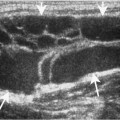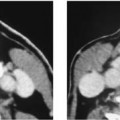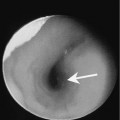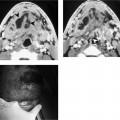Chapter 194 Squamous cell carcinoma (SCCA) of the floor of mouth (FOM) is the second common site of SCCA of the oral cavity and accounts for approximately 10 to 15% of all oral cavity carcinomas. The disease is more common in men between the ages of 40 and 60 (Fig. 194–1). Risk factors include smoking, alcohol abuse, and chewing betel nut. There does not appear to be an increased risk of FOM SCCA in patients with human immunodeficiency virus (HIV) disease. However, FOM SCCA appears to be more aggressive when it does occur in these patients. The most frequent location is the anterior floor of mouth. Table 194–1 lists the American Joint Committee on Cancer staging classification of the oral cavity. Early lesions appear as a slightly elevated, reddish area with ill-defined borders with minimal induration. Advanced lesions may extend along the periosteum, erode the mandible, or invade the tongue base. Early lesions are usually asymptomatic and may be detected on a routine dental checkup. About 30% of patients will have positive nodes at initial presentation. The lymphatic drainage of the FOM is supplied by an anterior and a posterior complex. The anterior complex drains the anterior half of the FOM and anterior portion of the sublingual gland. These lymphatic vessels terminate in the Level I nodes. The posterior group drains the posterior two thirds of the FOM. The primary drainage is to the ipsilateral Level II lymph nodes. However, there is occasionally a direct lymphatic drainage to the Level III nodes that bypasses the Level II nodes. Anatomic studies have shown significant cross-over of the lymphatic drainage of superficial lymphatic capillaries. As a result, both sides of the neck are at risk for metastases arising from FOM malignancies. Histologically, SCCA is classified as well, moderately, and poorly differentiated. On microscopic examination, SCCA appears as anaplastic-appearing cells found below the basement membrane with a variable degree of keratin production and intracellular bridges. FOM SCCA tend to be well differentiated.
Squamous Cell Carcinoma of the Floor of Mouth
Epidemiology
Clinical Features
Pathology
TX | Primary tumor cannot be assessed |
T0 |









